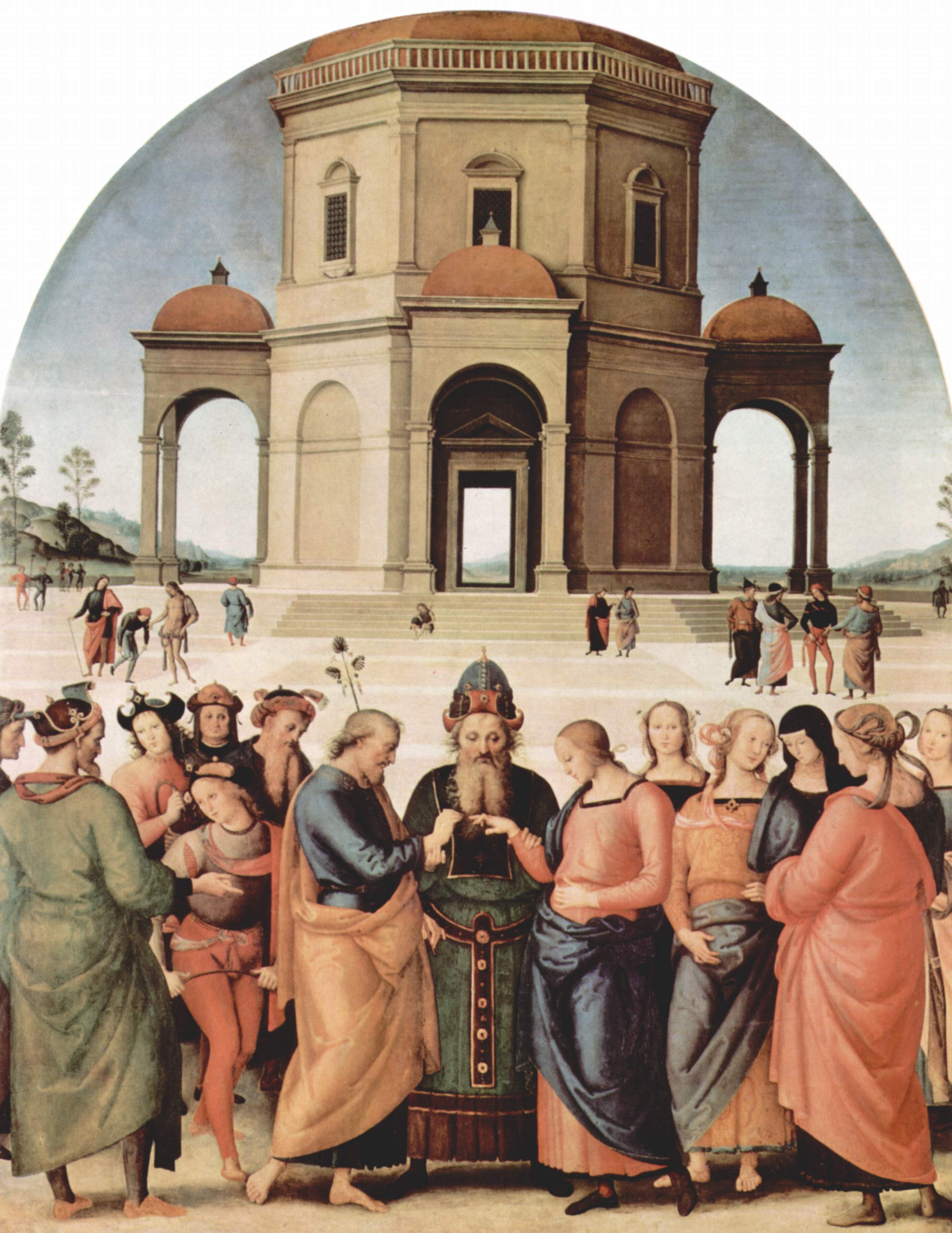|
Sposalizio - Liszt
:''The painting which inspired this piece of music is also sometimes called the Sposalizio; for it, see Sposalizio (painting).'' Sposalizio is the title of the first piece in Franz Liszt's ''Années de Pèlerinage, Deuxième Année de Pèlerinage: Italie'' (Second Year of Pilgrimage: Italy), published in 1858. The composition starts out with a simple pentatonic melody, which transforms itself into a complex musical architecture. The melody then transforms itself into a type of wedding march, which continually embellishes itself to lead up to the grand climax, which contains crashing octaves into a loud finish. The composition ends quietly. Franz Liszt composed Sposalizio, which translates into "Marriage", from Italian, after being inspired from Raphael's painting ''The Marriage of the Virgin (Raphael), The Marriage of the Virgin''. This was quite common for much of the works contained in his Années de Pèlerinage. Although the fast octaves can be somewhat challenging, the piece ... [...More Info...] [...Related Items...] OR: [Wikipedia] [Google] [Baidu] |
Sposalizio (painting)
''The Marriage of the Virgin'', also known as ''Lo Sposalizio'', is an oil painting by the Italian High Renaissance artist Raphael. Completed in 1504 for the Franciscan church of San Francesco, Città di Castello, the painting depicts a marriage ceremony between Mary and Joseph. It changed hands several times before settling in 1806 at the Pinacoteca di Brera. History In the later years of the 15th century, patrons in Citta di Castello sent three commissions to Raphael's teacher Pietro Perugino which, in Perugino's absence, were completed by Raphael.McCurdy (1917), p. 84. ''The Marriage of the Virgin'', featuring the theme of the Marriage of the Virgin, was the last of these. Evidently inspired by one of Perugino's paintings, also known as '' Marriage of the Virgin'', Raphael finished his own work, according to the date placed next to his signature, in 1504.Champlin and Perkins (1913), p. 380. This particular piece was commissioned by one Filippo degli Albezzini to hang in a ... [...More Info...] [...Related Items...] OR: [Wikipedia] [Google] [Baidu] |
Sposalizio - Liszt
:''The painting which inspired this piece of music is also sometimes called the Sposalizio; for it, see Sposalizio (painting).'' Sposalizio is the title of the first piece in Franz Liszt's ''Années de Pèlerinage, Deuxième Année de Pèlerinage: Italie'' (Second Year of Pilgrimage: Italy), published in 1858. The composition starts out with a simple pentatonic melody, which transforms itself into a complex musical architecture. The melody then transforms itself into a type of wedding march, which continually embellishes itself to lead up to the grand climax, which contains crashing octaves into a loud finish. The composition ends quietly. Franz Liszt composed Sposalizio, which translates into "Marriage", from Italian, after being inspired from Raphael's painting ''The Marriage of the Virgin (Raphael), The Marriage of the Virgin''. This was quite common for much of the works contained in his Années de Pèlerinage. Although the fast octaves can be somewhat challenging, the piece ... [...More Info...] [...Related Items...] OR: [Wikipedia] [Google] [Baidu] |
Franz Liszt
Franz Liszt, in modern usage ''Liszt Ferenc'' . Liszt's Hungarian passport spelled his given name as "Ferencz". An orthographic reform of the Hungarian language in 1922 (which was 36 years after Liszt's death) changed the letter "cz" to simply "c" in all words except surnames; this has led to Liszt's given name being rendered in modern Hungarian usage as "Ferenc". From 1859 to 1867 he was officially Franz Ritter von Liszt; he was created a ''Ritter'' (knight) by Emperor Franz Joseph I of Austria, Francis Joseph I in 1859, but never used this title of nobility in public. The title was necessary to marry the Princess Carolyne zu Sayn-Wittgenstein without her losing her privileges, but after the marriage fell through, Liszt transferred the title to his uncle Eduard in 1867. Eduard's son was Franz von Liszt., group=n (22 October 1811 – 31 July 1886) was a Hungarian composer, pianist and teacher of the Romantic music, Romantic period. With a diverse List of compositions by Franz L ... [...More Info...] [...Related Items...] OR: [Wikipedia] [Google] [Baidu] |
Italie
Italy ( it, Italia ), officially the Italian Republic, ) or the Republic of Italy, is a country in Southern Europe. It is located in the middle of the Mediterranean Sea, and its territory largely coincides with the homonymous geographical region. Italy is also considered part of Western Europe, and shares land borders with France, Switzerland, Austria, Slovenia and the enclaved microstates of Vatican City and San Marino. It has a territorial exclave in Switzerland, Campione. Italy covers an area of , with a population of over 60 million. It is the third-most populous member state of the European Union, the sixth-most populous country in Europe, and the tenth-largest country in the continent by land area. Italy's capital and largest city is Rome. Italy was the native place of many civilizations such as the Italic peoples and the Etruscans, while due to its central geographic location in Southern Europe and the Mediterranean, the country has also historically been home to ... [...More Info...] [...Related Items...] OR: [Wikipedia] [Google] [Baidu] |

